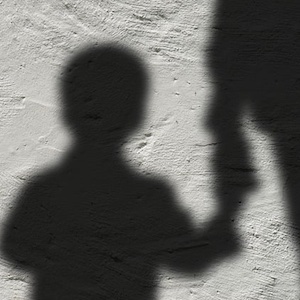Adolescents’ experiences of psychotherapy following child sexual abuse

Submitted: April 27, 2022
Accepted: May 6, 2023
Published: July 4, 2023
Accepted: May 6, 2023
Abstract Views: 1470
PDF: 610
HTML: 97
HTML: 97
Publisher's note
All claims expressed in this article are solely those of the authors and do not necessarily represent those of their affiliated organizations, or those of the publisher, the editors and the reviewers. Any product that may be evaluated in this article or claim that may be made by its manufacturer is not guaranteed or endorsed by the publisher.
All claims expressed in this article are solely those of the authors and do not necessarily represent those of their affiliated organizations, or those of the publisher, the editors and the reviewers. Any product that may be evaluated in this article or claim that may be made by its manufacturer is not guaranteed or endorsed by the publisher.
Similar Articles
- Paula Dagnino, Mariane Krause, Carola Pérez, Nelson Valdès, Alemka Tomicic, The Evolution of Communicative Intentions During Change Episodes and Throughout the Therapeutic Process , Research in Psychotherapy: Psychopathology, Process and Outcome: Vol. 15 No. 2 (2012)
- Elena Faccio, Francesca Turco, Antonio Iudici, Self-writing as a tool for change: the effectiveness of a psychotherapy using diary , Research in Psychotherapy: Psychopathology, Process and Outcome: Vol. 22 No. 2 (2019)
- Giorgio Falgares, Sandro De Santis, Salvatore Gullo, Danilo Carrozzino, Daniela Marchetti, Maria Cristina Verrocchio, Gianluca Lo Coco, Daniel Kopala-Sibley, Osmano Oasi, The Italian version of the Depressive Experiences Questionnaire: psychometric properties and validation in students, community, and clinical groups , Research in Psychotherapy: Psychopathology, Process and Outcome: Vol. 20 No. 1 (2017)
- Olga Fernández González, J. Carola Pérez, Mariane Krause, The relation between the therapeutic alliance and communicative intentions in therapeutic interaction during the initial phase of adolescent therapy , Research in Psychotherapy: Psychopathology, Process and Outcome: Vol. 22 No. 2 (2019)
- Giulia Gagliardini, Laura Gatti, Antonello Colli, Further data on the reliability of the mentalization imbalances scale and of the modes of mentalization scale , Research in Psychotherapy: Psychopathology, Process and Outcome: Vol. 23 No. 1 (2020)
- Diego Rocco, Francesco De Bei, Rachele Mariani, Introduction to the Special Issue: An Analysis of a Short Term Dynamic Psychotherapy , Research in Psychotherapy: Psychopathology, Process and Outcome: Vol. 16 No. 1 (2013)
- Anna Dourdouma, Kathrin Mörtl, The Creative Journey of Grounded Theory Analysis: A Guide to its Principles and Applications , Research in Psychotherapy: Psychopathology, Process and Outcome: Vol. 15 No. 2 (2012)
- Giorgio Caviglia, Raffaella Perrella, Walter Sapuppo, Nadia Del Villano, La ricerca in psicoterapia: il contributo del Gruppo di lavoro della Cattedra di Psicologia Dinamica (base) della Seconda Universitdi Napoli , Research in Psychotherapy: Psychopathology, Process and Outcome: Vol. 13 No. 2 (2010)
- Alessandro Gennaro, Miguel Goncalves, Inès Mendes, Antònio Ribeiro, Sergio Salvatore, Dynamics of sense-making and development of the narrative in the clinical exchange , Research in Psychotherapy: Psychopathology, Process and Outcome: Vol. 14 No. 1 (2011)
- Francesco De Bei, Diego Rocco, Silvia Salcuni, Introduction to the Special Section on “The Role of Psychotherapy Research in Psychotherapy Training: Mutual Influences and Relations” , Research in Psychotherapy: Psychopathology, Process and Outcome: Vol. 22 No. 3 (2019)
<< < 19 20 21 22 23 24 25 26 27 28 > >>
You may also start an advanced similarity search for this article.

 https://doi.org/10.4081/ripppo.2023.630
https://doi.org/10.4081/ripppo.2023.630





